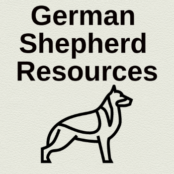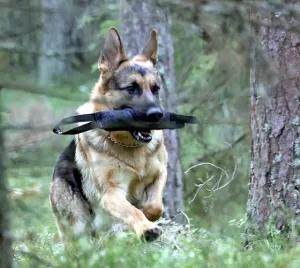Table of Contents
Introduction to Reactive Dog Thresholds
If you’ve ever found yourself struggling to manage a dog that barks uncontrollably at every passing car or lunges toward other dogs during a walk, you’re not alone. Many dog owners face the challenge of managing reactive behavior in their furry companions. The key to understanding and managing these behaviors lies in grasping the concept of reactive dog thresholds. This blog post will equip you with the knowledge and tools needed to help your dog overcome these hurdles. By understanding reactive dog thresholds, you’ll not only gain insight into your dog’s behavior but also learn strategies to help them lead a calmer and more fulfilling life.
Understanding Reactive Dog Thresholds
What Are Reactive Dog Thresholds?
Reactive dog thresholds refer to the point at which a dog becomes overwhelmed by a stimulus and exhibits reactive behaviors like barking, lunging, or growling. This is the moment when a dog’s coping mechanisms are exceeded, leading to an emotional response. Understanding these thresholds is crucial for dog owners, trainers, and behaviorists as it helps identify the triggers that push a dog beyond its comfort zone.
A dog’s behavior is significantly impacted by their thresholds. When a dog’s threshold is exceeded, they may exhibit fight or flight responses, making it challenging to control their actions. Recognizing and respecting these thresholds is the first step in managing reactive behavior effectively.
Common Triggers for Reactive Dog Thresholds
Reactive dog thresholds can be influenced by a variety of triggers. Environmental triggers, such as sudden noises, unfamiliar people, or the presence of other animals, can set off a reactive episode. Dogs are highly sensitive to changes in their surroundings, and these external stimuli can easily overwhelm them.
Situational triggers, like being on a leash or in a confined space, are common culprits for reactive behavior. For some dogs, the sensation of being restrained or confined can lead to heightened anxiety and reactivity. Understanding these situational contexts can help owners anticipate and manage their dog’s behavior.
Additionally, emotional triggers like fear, anxiety, and excitement play a significant role in a dog’s reactivity. Recognizing these emotional states and their impact on a dog’s behavior can guide owners in providing appropriate support and training to address underlying issues.
Identifying Reactive Dog Thresholds
Observing Your Dog’s Body Language and Behavior
To effectively manage reactive behavior, it’s essential to become attuned to your dog’s body language and behavior. Signs of stress and arousal, such as raised hackles, tense posture, or excessive panting, can indicate that a dog is nearing their threshold. By recognizing these early warning signs, owners can intervene before the situation escalates into a full-blown reactive episode.
Recognizing the early warning signs of reactivity, such as subtle changes in your dog’s demeanor or increased vocalization, allows you to take proactive measures to prevent a reactive response. This keen observation is a valuable skill for any dog owner or trainer.
Keeping a Behavior Journal
Maintaining a behavior journal is an effective way to track your dog’s triggers and threshold levels. Documenting specific incidents, including the context and environment, can reveal patterns and trends in your dog’s reactivity. Over time, this information can help you tailor your training approach to address specific triggers and reduce reactivity.
Identifying patterns and trends in your dog’s behavior is crucial for developing a targeted training plan. By correlating specific triggers with reactive episodes, you can implement strategies to manage and mitigate these situations effectively.
Consulting with a Professional Dog Trainer or Behaviorist
While observing and documenting your dog’s behavior is valuable, consulting with a professional dog trainer or behaviorist can provide expert insights and guidance. These professionals possess the experience and knowledge to conduct a thorough assessment of your dog’s behavior, helping you understand the root causes of reactivity and develop a personalized training plan.
Developing a personalized training plan with a professional can set you and your dog on the path to success. Their expertise ensures that your approach is tailored to your dog’s unique needs and circumstances, increasing the likelihood of achieving lasting positive change.
Strategies for Overcoming Reactive Dog Thresholds
Incremental Exposure and Desensitization
One effective strategy for overcoming reactive dog thresholds is incremental exposure and desensitization. Gradually exposing your dog to triggers in a controlled environment allows them to build tolerance and reduce reactivity over time. By reinforcing calm and non-reactive behavior, you create positive associations with previously distressing stimuli.
Reinforcing calm and non-reactive behavior is essential for building your dog’s confidence and resilience. Rewarding desired behaviors in the presence of triggers encourages your dog to adopt more adaptive responses, reducing the likelihood of reactive episodes.
Positive Reinforcement Training
Positive reinforcement training is a powerful tool for modifying reactive behavior. By teaching alternative behaviors and coping mechanisms, you provide your dog with constructive ways to manage stress and anxiety. This approach not only redirects their energy but also strengthens the bond between you and your dog.
Building your dog’s confidence and trust through positive reinforcement lays the foundation for lasting behavior change. When your dog feels secure and supported, they’re more likely to respond positively to training and exhibit improved behavior in challenging situations.
Environmental Management
Environmental management plays a crucial role in managing reactive dog thresholds. Modifying your dog’s environment to reduce triggers can prevent reactive episodes from occurring in the first place. This may involve creating safe spaces, using barriers, or adjusting routines to minimize exposure to potential stressors.
Using tools and equipment to manage reactive episodes, such as harnesses or calming aids, provides additional support during high-stress situations. These interventions can help you maintain control and ensure your dog’s safety while working towards long-term behavior modification.
Medication and Supplements (If Recommended by a Veterinarian)
In some cases, addressing reactive behavior may require the use of medication or supplements. These interventions can help alleviate underlying anxiety or stress, making it easier for your dog to engage in training and behavior modification. However, it’s important to consult with a veterinarian before pursuing this option.
Taking a holistic approach that combines training, environmental management, and, if necessary, medication or supplements, ensures comprehensive support for your dog’s well-being. This multifaceted strategy addresses both the symptoms and root causes of reactivity.
Maintaining Progress and Preventing Relapse
Continuous Training and Reinforcement
Maintaining progress in managing reactive dog thresholds requires ongoing commitment to training and reinforcement. Consistency is key to reinforcing positive behaviors and preventing regression. Regular practice and reinforcement of learned skills help solidify your dog’s progress over time.
Adapting the training plan as your dog progresses is essential for continued success. As your dog becomes more confident and resilient, adjusting the training approach to address new challenges ensures sustained improvement and growth.
Dealing with Setbacks and Maintaining a Positive Mindset
Dealing with setbacks is a natural part of the training process. It’s important to approach these moments with patience and understanding, recognizing that setbacks do not erase progress. Maintaining a positive mindset and celebrating small victories fosters motivation and resilience for both you and your dog.
By maintaining a positive mindset, you’re better equipped to handle challenges and setbacks with grace. This attitude reinforces your role as a supportive partner in your dog’s behavior modification journey.
Conclusion
Understanding and managing reactive dog thresholds is a crucial step towards helping your dog live a happier and more balanced life. By recognizing triggers, employing effective training strategies, and seeking professional guidance when needed, you can empower your dog to overcome reactivity and build a stronger bond with them. Remember that progress takes time and effort, but with dedication and a holistic approach, positive change is within reach.
For those seeking further support and resources, consider reaching out to qualified dog trainers or behaviorists who can provide personalized guidance tailored to your dog’s unique needs. With the right tools and mindset, you can create a harmonious environment where both you and your dog thrive.

